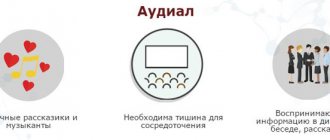Have you ever met people who resembled robots? They have schematic thinking, everything must be subject to logic. Digital is exactly the kind of person who fits this description. If you tell him something, then every word will be subjected to strict analysis for logic. He is also interested in knowing how things work. Most often, digitals are men. Their brains are more prone to cold analysis than women's. They must decompose the whole world into patterns, formulas, causes and consequences. This is the only way everything should work without deviations.
Digital is a person who was not born this way. It is more like an acquired skill that was formed under the influence of some actions, relationships, situations.
Who are digitals? Some psychologists argue that these are the people who are able to hear and feel something strong and emotional, but instead of showing it to themselves and others, they prefer to hide everything. As a result, their brain switches to a special mode of operation, which translates emotions into patterns.
Features of digital behavior
How do you understand that this is a representative of this type? A discrete person is a person who resembles a programmed machine. He knows a lot and this irritates many of his interlocutors. He will not tolerate the fact that someone said an inaccurate date or the information was presented in a distorted form.
Discrete people are those who will often use the following words in dialogue with you: I know, logically, I believe, carefully, etc.
I would like to note that this man is not just a bore. He is an excellent strategist who will accomplish a difficult task quickly and well. He perfectly remembers information, which he then sorts and analyzes. It cannot be rushed, because the thought process is a complex process that takes time. You will see what digital is if you try to introduce it to a large number of people at one time or load it with several tasks. He won't be able to cope quickly. In order for this type to be an effective worker, you need to give him dosed tasks that he could solve step by step, drawing up a plan. He definitely won’t like it if someone tries to get into his personal space, wants to change his plan of action, and bombards him with new questions.
Recommended reading → What is pessimism and is it really such a bad thing?
By the way, digital is a psychological type that appeared quite recently. For another 20 years they didn’t even know about him. Psychology divided people into only three personality types: auditory, visual and kinesthetic. People who perceived information through sound, pictures and touch.
A person perceives and also shares information in three ways: through sounds, images and movements. Depending on which option is used by people most often, they are divided into three groups according to types of perception. This:
– auditory learners;
– visuals;
– kinesthetics
And since internal dialogue, working with words and numbers, is added to external perception, a fourth group is conventionally distinguished. This:
– digitals.
There are practically no people who use only one channel. So we all represent mixed types of perception. Let’s try to understand in more detail what the difference in the perception of information is.
Speak and I will recognize you
Auditory learners perceive this world by ear. Sounds are the most important source of information for them. They have excellent hearing and excellent memory. They love not only to listen, but also to talk. Moreover, it is undesirable to interrupt them, as they may become offended and withdraw into themselves.
What does the audio look like?
As a rule, they have an upright posture with a slight forward lean. The chest is often well developed. Their voices are very expressive, pleasant, melodic. When speaking, auditory learners do not like to make eye contact; this prevents them from listening. When listening to the interlocutor, people with this type of perception often tilt their heads slightly to the right and cross their arms over their chest.
Auditory speech
They often use words and expressions related to sound perception. For example:
- listen;
- sounds tempting;
- harmonious;
- what a mysterious tone;
- sounds great;
- glad to hear it.
Auditory people are precisely those people who love with their ears, so talk to them at every opportunity, say pleasant words and listen to them very carefully, they are very upset if they are “not heard.”
I can see everything - so you know
People who perceive most information through vision are called visuals .
They are dreamers, as they can perfectly imagine various pictures and scenes. At the same time, people who plan everything clearly. It is not difficult for them to divide work between employees and draw up strategies. They also prefer visual reports and love when “everything is beautiful.”
What does the visual look like?
His appearance is always on point. These people do not allow themselves to dress sloppily. They are capable of choosing uncomfortable clothes just to look attractive.
Visual people have a keen eye and a high-pitched voice. They gesture a lot, as if showing what they are talking about. At the same time, their gestures are directed away from themselves and horizontal.
They usually stand and sit upright, and if they slouch, they lift their heads up. Their gaze is usually directed upward. At the same time, they always look at the interlocutor and demand the same from him. Visualizers often have slightly raised eyebrows.
Visual speech
When speaking, they often use words related to visual perception:
- it looks;
- look what it is;
- it will be visible there;
- you see;
- I see.
These people prefer to be at a distance from the interlocutor in order to get a better look at him and cannot stand touching or hugging. They love with their eyes.
I won't believe it until I touch it
People who perceive the world through movement, smell and touch are called kinesthetics .
These are people of action who just need to smell, taste and touch everything. They do not perceive information if it cannot be put to use immediately and carry out what they have learned.
Kinesthetic learners are very receptive, as they let everything pass through them. They do not know how to hide their feelings and often hide their eyes, which give them away.
What do kinesthetics look like?
They dress in comfortable clothes, the appearance of which is not very important to them. As a rule, they have a dense physique. They most often have full and wide lips.
They often slouch, stand and sit leaning forward. They try to be as close to the interlocutor as possible in order to be able to touch him during communication.
Kinesthetic learners move smoothly. The gaze is almost always directed downwards.
Speech kinesthetics
People of this type of perception prefer to use words and expressions that describe movements and feelings. You can often hear from them:
- I feel (feel) this way;
- hand in hand;
- keep calm;
- make contact;
- to catch something;
- control yourself.
Kinesthetic people are happy people. They love to touch.
We immediately see the meaning and essence
It would seem that we have considered all the channels of information, which means that you can simply take a test for the type of perception and find out who your baby is, but it’s worth finding out about one more type.
People who perceive information through logical comprehension, with the help of signs, numbers and logical arguments, are called digitals.
For them, meaning and functionality are most important. The digital channel controls speech, therefore people of this type of perception are focused on words. They are able to create documents that do not contain ambiguous language.
What does digital look like?
They have a stiff, upright posture, monotonous speech, and virtually no gestures. They prefer to look at the interlocutor's forehead, or over his head. They don't like to be touched. Although outwardly they resemble kinesthetics. These types of perception are very close. Moreover, digitals are precisely obtained from hypersensitive kinesthetics. When feelings become too strong, a person tries to distance himself from them, to retreat into reasoning.
Digital speech
When communicating, digitals can often use the following expressions:
- let's think;
- if you think sensibly;
- thinking logically.
And the internal dialogue of digital is replete with the following expressions:
- or I was wrong;
- I did something wrong;
- I’ll answer him next time;
- why did he call me that?
He loves digital with his mind.
Characteristics of the psychotype and characteristics of perception
A discrete type of personality that has the ability to evaluate and perceive the world using logic and analytics. These are excellent chess players and lawyers, wonderful scientists, programmers and mathematicians. Thanks to his sharp mind, digital is able to adapt to the interests of his interlocutor in order to explain something to him. For the visual, he will choose bright images, and for the auditory, he will use living language.
Unfortunately, in everyday life, digital can be a difficult interlocutor or lover. He doesn't like to show his emotions. His actions convey pedantry and prudence. He does not listen to the interlocutor, but tries to understand what he wants to get from him. For him, conversations should be strictly to the point.
How to understand what type a child belongs to?
I suggest taking a very useful test for children “CHANNELS OF INFORMATION PERCEPTION”
The test is intended for preschoolers and primary schoolchildren.
As you read the questions, note the traits that your child has. Then summarize and compare the results.
1. COMMUNICATION
If my child wants to say something, then...
Visual - speaks using the simplest figures of speech, pronounces some words and sounds incorrectly, and misses adverbs and prepositions.
Auditory - Uses the same figures of speech as adults, uses grammatically correct sentences, and tells carefully thought out stories.
Kinesthetic - speech is difficult to understand, speaks in short, grammatically incorrect sentences, strives to depict events instead of telling about them.
2. FAVORITE TOYS AND FREE TIME
While playing, my child...
Visual - prefers puzzles and board games, enjoys computer games or games with a calculator, learns about new things by observing.
Auditory - loves listening to audio recordings, loves books and fantasy play. learns new things by reading instructions.
Kinesthetic person - loves to play in the fresh air, enjoys being in the pool, skating rink or slide, and finds full use for almost every toy.
3. COMPLEX MOTOR SKILLS
When my child starts doing something with his hands, then...
Visual - he writes diligently, his works of art are very neat and beautiful, he can easily cut out, paint, and glue together.
Auditory - writes quite well; he talks to himself while working.
Kinesthetic - he writes with difficulty, many of his letters and numbers turn out ugly, his work is untidy.
4. SIMPLE MOTOR SKILLS
When my baby starts moving...
Visual - he considers board games better than outdoor games; he loves games with clearly established rules.
Auditory - talks more than plays; prefers games that require verbal communication; during any activity he talks to himself.
Kinesthetic - considers outdoor games better than board games, has good coordination, does not walk quietly, but rushes about.
5. SOCIAL SKILLS
When my child is surrounded by other children, then...
Visual - even in a crowd he remains alone; before taking part in the game, watches how others play; takes a long time to get used to new people.
Auditory - literally blossoms among friends; may interfere during classes because she talks a lot; often takes responsibility for others and behaves somewhat dismissively.
Kinesthetic - collectivist, but not very talkative; can cause anxiety because he interferes with his neighbors during class activities and likes to play pranks.
6. EMOTIONS
When a child is worried about something, he...
Visual - not very emotional, begins to get nervous, feeling the concern of others.
Auditory - freely talks about his feelings, can go into confrontation with others about his feelings.
Kinesthetic - emotionally dependent and easily offended; when called to order, he reacts angrily, without embarrassment or repentance.
7. MEMORY
When my child studies, he...
Visual - can reproduce letters and numbers from memory; remembers what was shown to him.
Auditory - learns best by memorizing; knows the sounds corresponding to the letters of the alphabet.
Kinesthetic person - does not remember well, is easily distracted.
8. SCHOOL SKILLS
When my child is in the classroom, he...
Visual - monitors the neatness of his clothes and the cleanliness of his workplace; in his free time he prefers construction sets, puzzles, various types of art and crafts; slowly gets used to the new situation.
Audial - his appearance is not very sloppy, but not very neat either; he has to be reminded to clean his work area; he is attentive and obedient.
Kinesthetic - does not care at all about his appearance and is often very unkempt; works in an environment of complete chaos; is able to turn over his workplace in a few minutes; is very active during games; forced to sit in one place, literally writhing and squirming.
One of the definitions - auditory (auditory perception), visual (visual perception) or kinesthetic (tactile perception) - most likely received the most marks. This channel of information perception means the way of cognition that is most characteristic of your child.
Discretes are born or create themselves
A digital person is a person who has made himself this way under the influence of life situations. A child cannot be digital, scientists have come to this opinion. Young kinesthetic learners may become discrete in later life, but not be born with already characteristic signs.
The discrete type hides their feelings, but not without reason. Most likely there was an impetus in life that led to these actions. They began to view feelings as weakness, deficiency and useless action. It is easier for them to drown out their feelings by acting rationally. At first it is difficult for them, but like all other habits that change perception, they eventually merge with their character.
How to raise discrete children?
A separate option for communication is education. In childhood, digitals are rare, especially pronounced ones. This psychotype manifests itself during adolescence. Basically, logical thinking is formed under the influence of the environment, although the influence of heredity cannot be denied. The tendency to intellectual activity is inherited, but manifests itself in the process of upbringing and training.
From these positions, it is difficult to judge the reasons causing the appearance of discreteness; either it is the implementation of internal programs, or a consequence of artificially created conditions. In general, there is an opinion in the literature that this type of perception is formed as a result of mental trauma, when a person suppresses his feelings and emotions, escaping into the world of logic.
As a rule, children from disadvantaged families who grew up in emotionally difficult conditions become digitals. It is difficult to judge how true this is, just as it is difficult to think about the “defectiveness” of the named psychotype. Rather, we are talking about an independent phenomenon that objectively arises in the world, in response to new challenges and tasks of reality.
So, digital people need to be educated, and not re-educated, as at one time it was recommended to do with left-handers, and hundreds of thousands of Soviet children were forced to learn to write with their right hand. The world is diverse and there is a place for everyone in it, including a left-handed person, a discrete person or someone else. It’s just that in the educational process, it is necessary to pay attention to the peculiarities of human perception. If he needs proof and logic, give it to him. Don’t force him to cram and take it on faith, but explain it using examples from life that will relate to his personal experience.
Take a temperament test
How to communicate digitally
Don't think that such people are closed. They do not like emotionality, but they do not shy away from society. It is quite easy for them to understand the people who stand in front of them. The only thing is, if a person seems stupid to him, he won’t mess with him. Why waste time on nonsense? This is a digital opinion that cannot be changed in any way.
You can understand that digital is in front of you by the following signs:
- even posture and straight back;
- head held high;
- hands clasped or crossed.
If a person walks, then his movements do not seem smooth. These are sharp and quick steps. Many people think that the type is arrogant, but this is because he likes to keep his distance from his interlocutors and does not like it when it is violated.
We recommend reading → The hottest discounts of the week: 04/27 – 05/3/2020
The discrete psychotype has a sharp mind, which means he most often has a higher education. If you want to make friends with him, then do not start conversations on philosophical topics. Conversations where there are logical chains and connections are only suitable here.
Visual (visual) channel
If a person has a dominant visual channel (or is currently configured to perceive video information), then outwardly this will be expressed in the following signs:
1. The eyes will look up, above the horizon line. Which is quite understandable: the sky is above, the sun is there - there is more light there;
2. Upper, chest breathing;
3. Voice is high;
4. Speech is fast, sometimes excitedly. There is often a noticeable increase in intonation towards the end of a sentence. Which is also understandable: upper breathing is the most ineffective - a small volume of air is inhaled and during exhalation you need to have time to express a thought, finish a sentence;
5. All gestures from above - at the level of the shoulder girdle and above;
6. Such a person likes to dress brightly;
7. Appearance: pale face. The body is most often slender and thin. The shoulders are relatively broad and usually raised. The head is thrown back;
8. Predicates: light, dark, bright, beautiful, see, look,... That is, words that relate to the characteristics of light, color and visual perception.
Note: Predicates are words that a person uses to describe his or her perceptions.
The visual channel is associated with the ajna chakra (third eye), as well as with the mental body.
Who do they work most often?
Who is digital? This is a very educated person with a huge amount of knowledge. This was mentioned above. It is clear that he will work with papers and a computer, but not with paintings. Paperwork is great for them. They analyze tasks well and are able to put everything “on the shelves” in the right order.
By the way, it turns out that digital can become an excellent psychologist. This is due to the fact that he knows quite a lot, knows how to understand people and analyze all events.
There are quite a lot of representatives of this type among programmers. It seems like the most suitable profession for such cold and calculating individuals. Unfortunately, the work itself contributes to the degeneration of an ordinary person into a digital person. Anyone who is used to working with diagrams, numbers and accustomed to order ends up looking like a robot.
Among the representatives there are many researchers and scientists. They are unmatched in analytics and scientific research.
What professions are suitable for discrete people?
Based on the characteristics of thinking and worldview, digitals find themselves in disciplines associated with an analytical mindset. Suitable professions include lawyer, attorney, detective, mathematician, physicist, programmer, psychologist, philosopher, analyst, statistics or standardization worker, analyst, mechanic, engineer, economist, sociologist, literary critic.
Considering that pronounced psychotypes are rare, as a rule, people combine several main channels for obtaining information. So, a discrete person can combine an auditory or visual type of perception, which will also be reflected in the choice of profession. But he is unlikely to be a “part-time” kinesthetic person, since he avoids sensuality and emotionality, so he is not often found among massage therapists or dancers.
Child digital
As it turned out above, small children cannot be discrete. This is an acquired psychotype that develops at a conscious age. If it seems to you that your child loves the computer too much and is drawn to programming, then do not rush to conclusions. Perhaps your child is kinesthetic, who in the future may become digital, but you can influence this yourself by having conversations, showing emotions and not forbidding even a boy to cry, hug and express his feelings.
Article rating
(No ratings yet)
Visual sensory representational system
People with a dominant visual sensory representational system think in clear images and think primarily in “pictures,” as if watching a movie inside themselves. This system allows you to cover a large amount of information at once: internal images are holistic, appear instantly, constantly replacing each other. This is associated with a faster rate of speech and a higher pitch of voice. Such people are characterized by rich facial expressions and gestures, since with their help they “complete” what they are talking or thinking about. People with a dominant visual sensory representational system often pay attention to nuances of color and shape. Artists, architects, photographers, fashion designers, when creating clear, constructed mental pictures, often turn to the visual system. In life, such people are purposeful, organized, observant, and quite cautious. They are very neat, prefer everything to be in its place, and value cleanliness and order. When assessing any things or events, they like to step aside, looking “from head to toe.” They perceive information presented in the form of pictures, graphs, diagrams better than information expressed in words.
Auditory sensory representational system
People with a dominant auditory sensory representational system have the ability to make subtle auditory distinctions, to clearly hear a variety of tones and timbres of sounds. The rate of speech is average, so such people usually speak loudly and clearly, in a strictly maintained rhythm. Their voice tone is clear, expressive and resonant. People with a dominant auditory sensory representational system often pronounce, whisper to themselves what they just heard. The conversation or thinking process of such people may be accompanied by small rhythmic movements of the body, for example, tapping a foot to the beat of a conversation. When speaking, such people pay attention not only to the words, but also to how they are pronounced. They often turn their ear towards the interlocutor, as if listening to the tonality, timbre and rhythm of his voice. These people themselves are very talkative, love conversations, and always very clearly outline the course of events. It is best to perceive information by ear, remembering everything sequentially step by step. Sometimes such people seem slightly withdrawn, “detached,” as they often engage in internal dialogue—talking to themselves. They feel music very subtly and have a good sense of rhythm.










